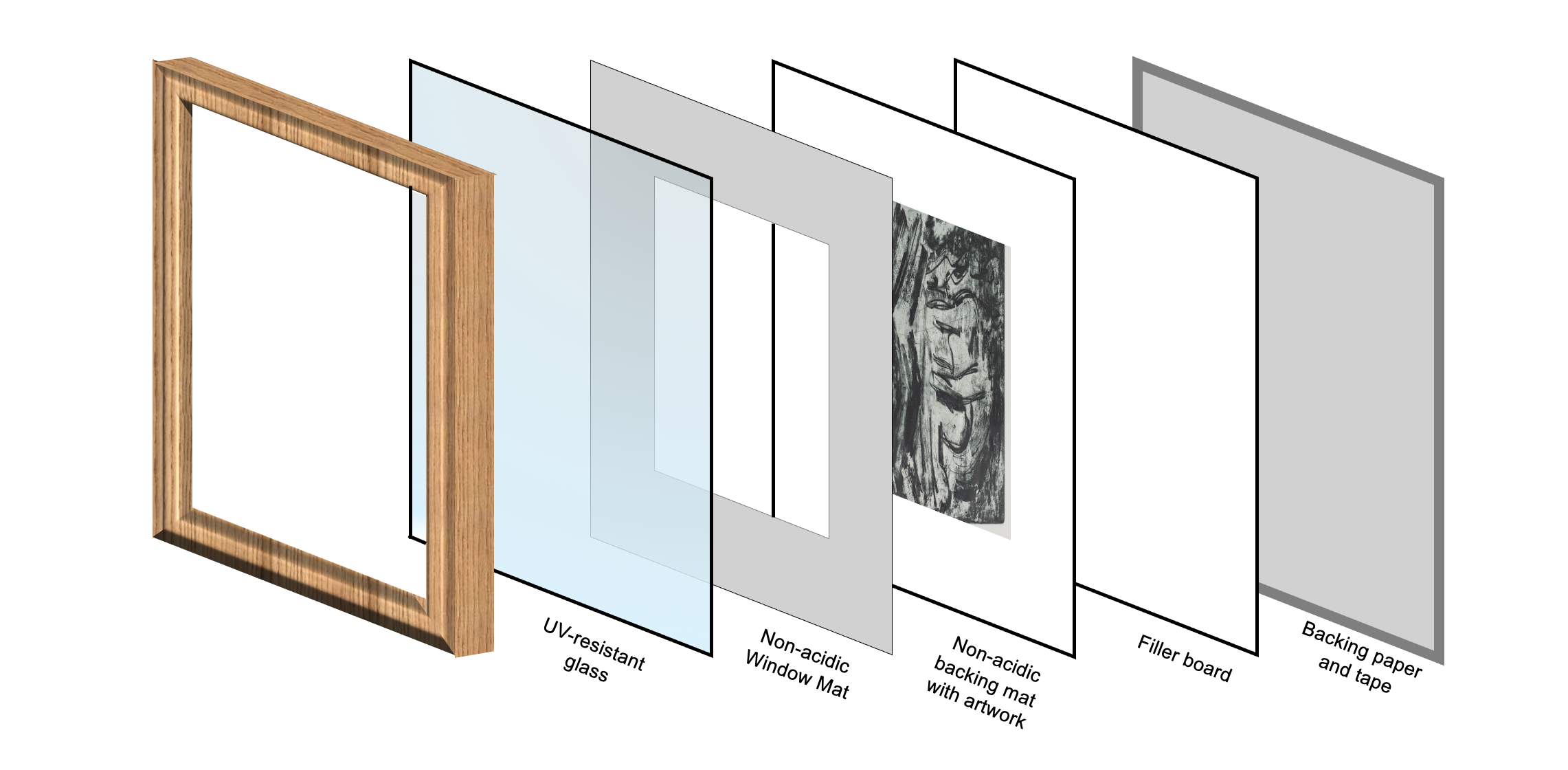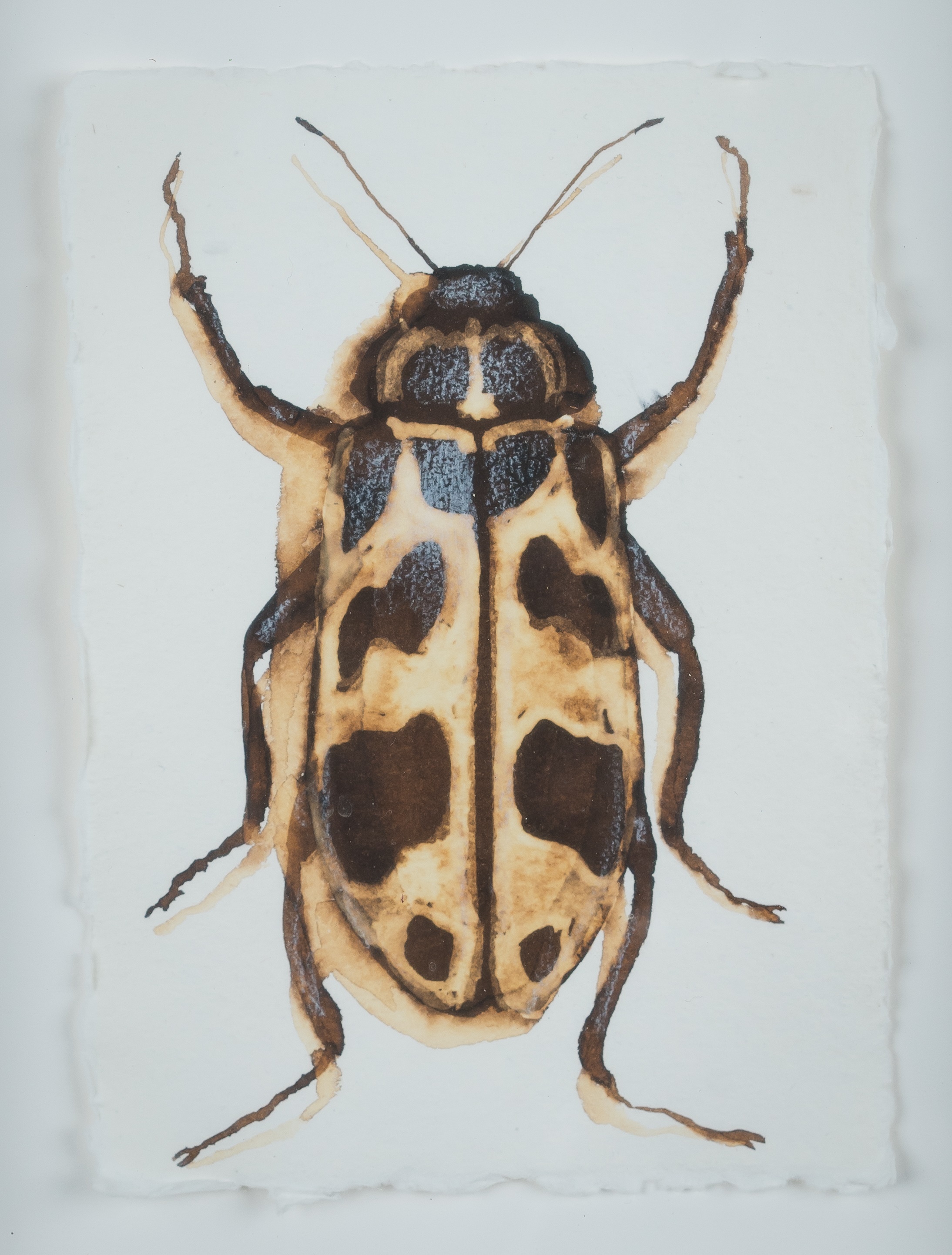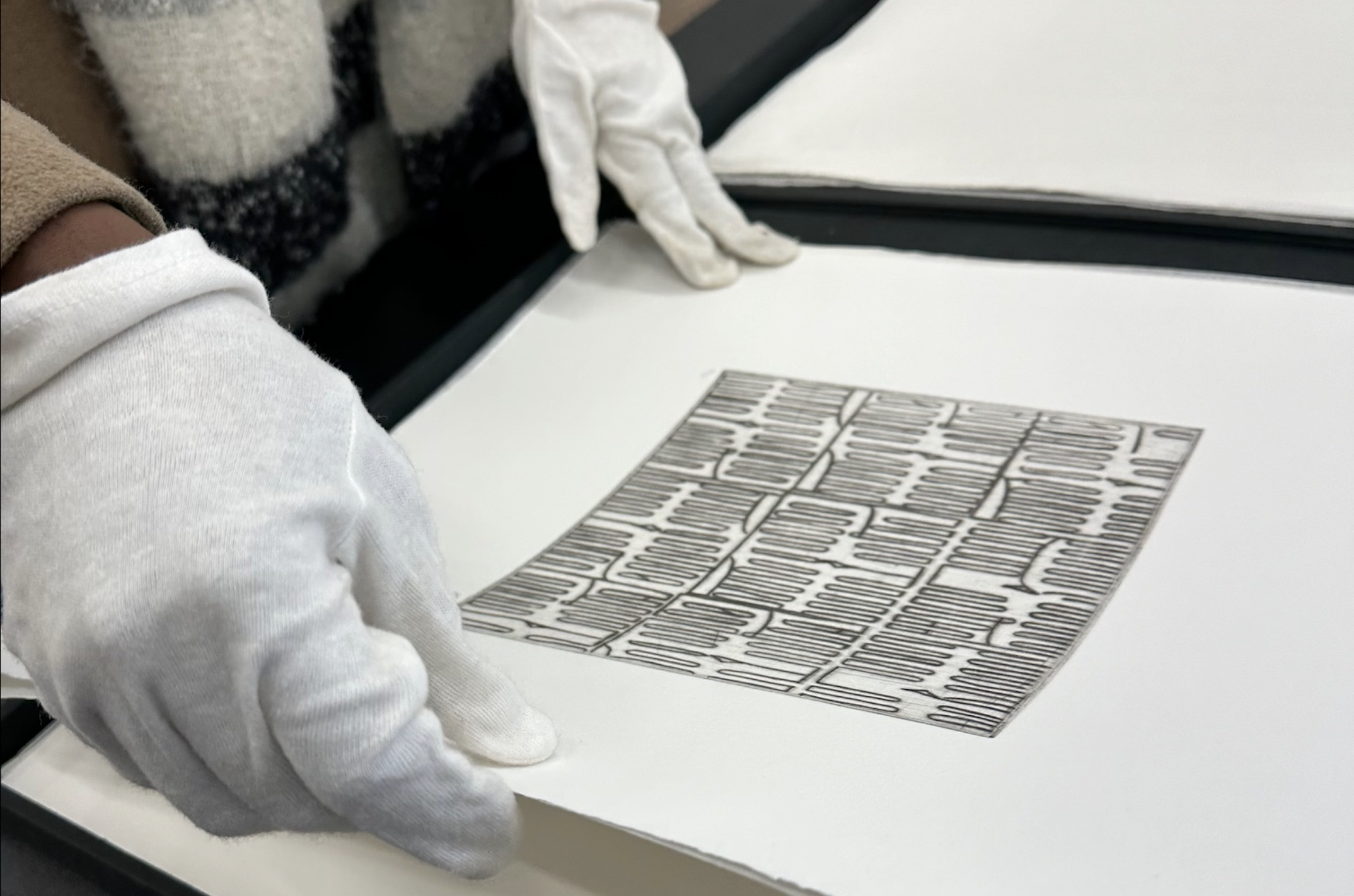Artworks on paper, whether they are drawings, prints, watercolours, or pastels, offer a unique and delicate beauty that requires careful attention and maintenance. Proper care and informed purchasing decisions can ensure that your paper-based art remains vibrant and intact for many years. Here are some top tips for caring for your artworks on paper and key considerations when buying them.
Top Tips for Caring for Artworks on Paper
- Framing and Mounting
- Use Acid-Free Materials: Ensure that the matting and backing materials are acid-free to prevent deterioration and discoloration.
- UV-Protective Glass: Frame your artwork with UV-protective glass or acrylic to shield it from harmful ultraviolet rays (both natural and artificial), that can cause fading and damage.
- Avoid Direct Contact: The artwork should not touch the glass. Use a mat or spacers to create a gap between the surface of the work and the glass, preventing potential condensation and sticking, which could result in material loss if the work is ever removed from its frame.

- Environmental Conditions
- Temperature and Humidity Control: Store artworks in a cool, dry environment. Avoid extreme fluctuations in temperature and humidity to prevent warping, mould growth, and other damage.
- Avoid Direct Sunlight: Display your artwork away from direct sunlight to prevent fading and discolouration. Indirect lighting or low UV lighting is preferable.
- Protect from Pollutants: Keep artworks away from pollutants such as smoke, dust, and fumes, which can cause staining and degradation.
- Handling and Cleaning
- Clean Hands and Gloves: Always handle artworks with clean, dry hands or wear cotton gloves to avoid transferring oils and dirt.
- Gentle Dusting: Use a soft, dry brush or a microfiber cloth to gently dust the surface of the artwork and frame. Avoid using any cleaning products directly on the artwork.
- Storage Solutions
- Flat Storage: Store unframed artworks flat in acid-free folders or boxes, separated by interleaving sheets of acid-free paper.
- Avoid Rolling: Rolling an artwork can cause creases and damage to the medium. Paints such as gouache, which are prone to flaking, should not be rolled. If absolutely necessary, roll artworks carefully with a protective layer and store in a sturdy tube.
- Regular Inspection
- Check for Damage: Periodically inspect your artworks for signs of damage such as discoloration, mould, or insect activity. Early detection allows for timely intervention and preservation. If in doubt, contact a conservator for a professional opinion.
What to Look for When Purchasing Artworks on Paper
- Condition
- Support Damage: This can include tears and rips to the paper as well as creases or folds. This could be caused by improper storage or handling and often needs to be professionally addressed.
- Stains and Discolouration: Check for water marks or tidelines, which can indicate previous exposure to moisture and promote mould growth and paper deterioration. General discolouration such as yellowing could also be an indication of a broader condition issue. Foxing, appearing as reddish-brown spots, is another aspect to look out for as this indicates a reaction to metal impurities in the paper and can often be treated, but can worsen if left to develop.
- Surface Issues: Pay attention to any material losses to the surface of an artwork, which could include abrasions or scratches, as well as smudging or rubbing of the medium. This is particularly relevant to more unstable mediums like charcoal or pastel.
- Signs of Mould or Mildew: Any fuzzy patches or musty smells, as well as powdery white, grey or black spots could be an indication of mould or mildew growth. This can cause significant damage to the paper and can be extremely difficult to fully eradicate.
- Signs of Insect Damage: Inspect an artwork for any small, black specks which could be insect droppings that have stained the paper. Checking for any holes or grazing marks caused by insects could also help to catch any infestation or insect problems that need to be treated.
- Paper Quality
- Type of Paper: Consider the type and quality of the paper used. High-quality, acid-free paper is more durable and less prone to deterioration.
- Age and Fragility: Older artworks may require more careful handling and conservation. Be aware of the inherent fragility of antique paper.
- Framing and Presentation
- Existing Framing: If the artwork is already framed, assess the quality of the framing materials and techniques used. Ensure they are suitable for paper preservation.
- Reframing Needs: Be prepared to reframe the artwork using conservation-grade materials if the existing frame is not up to standard.
By following these guidelines, you can ensure that your artworks on paper remain in excellent condition and retain their aesthetic and financial value over time. Proper care and informed purchasing are key to enjoying and preserving your paper-based art collection.
The Works on Paper auction, open for bidding until 16th July, offers collectors an exquisite collection of art on paper, works created with paper and a selection of editioned pieces created by prominent modern and contemporary artists locally and abroad. While this is a timed-online auction, our specialists are happy to provide condition reports to any interested parties to encourage informed purchases and allow intentional expansion of paper collections.

Walter Oltmann, Beetle, illustrating deckled edges and archival framing techniques
Works on Paper is open for bidding until Tuesday, 16 July with lots beginning to close at 6pm.
Register to bid online at www.aspireart.net
SALE ENQUIRIES
Cape Town: ct@aspireart.net | +27 10 109 7989
Johannesburg: jhb@aspireart.net | +27 10 109 7989



